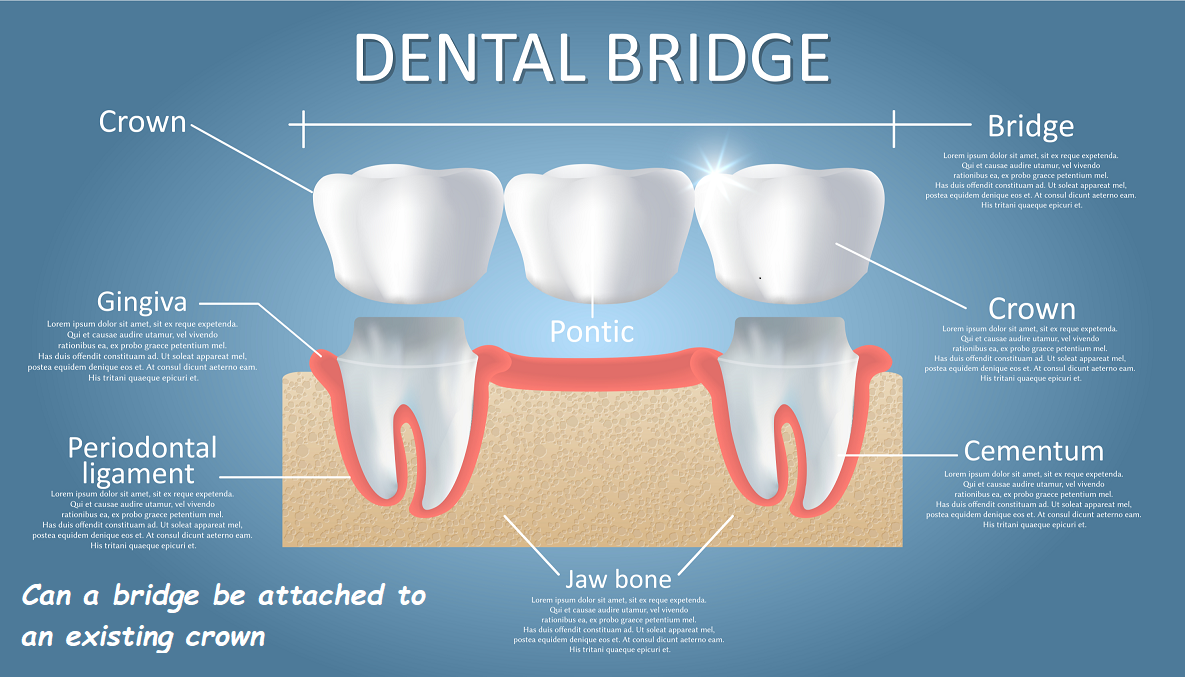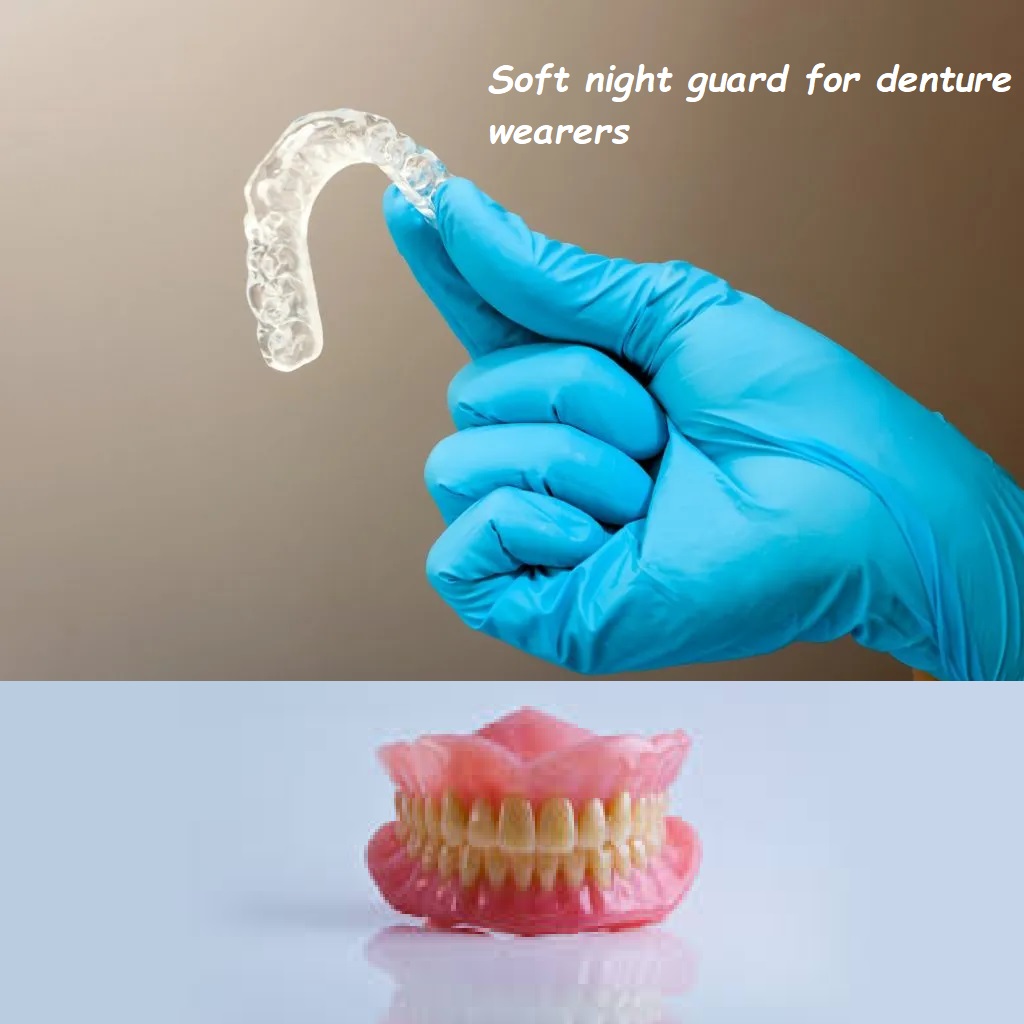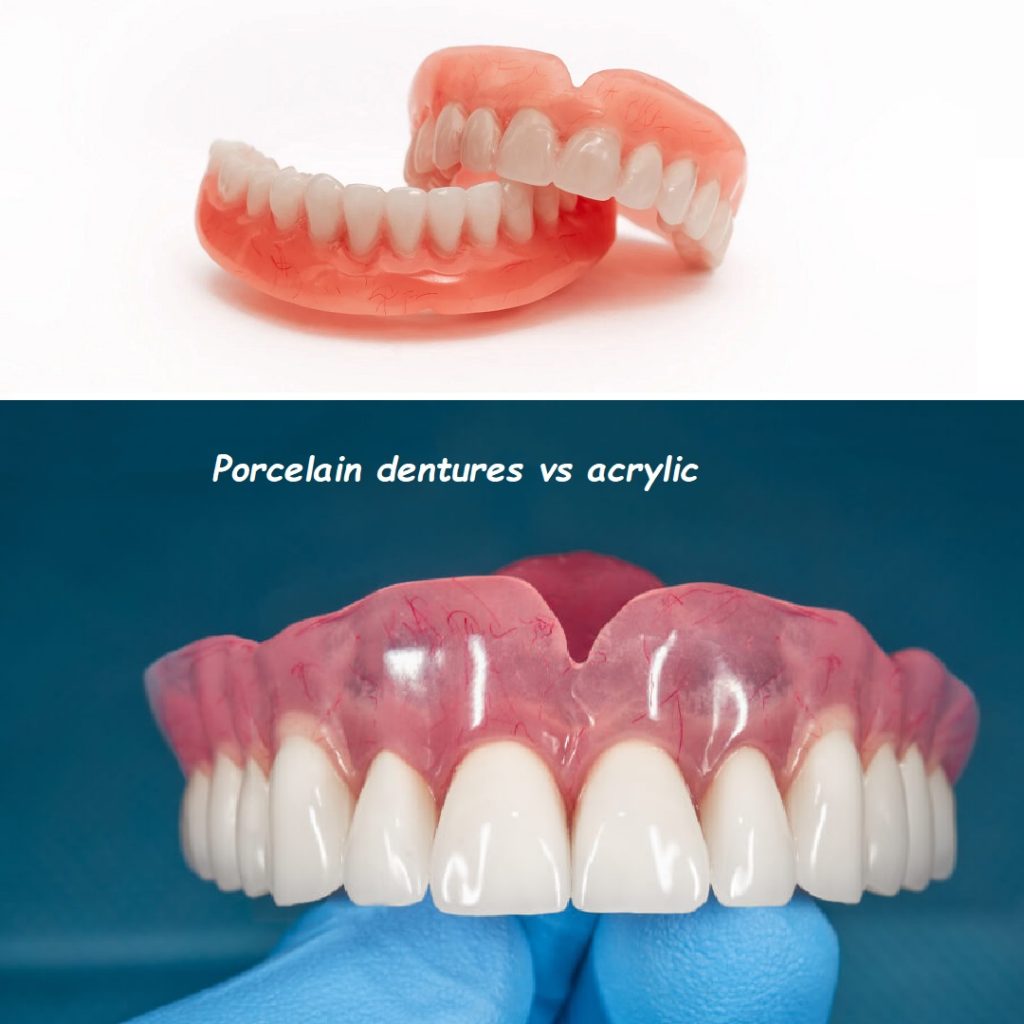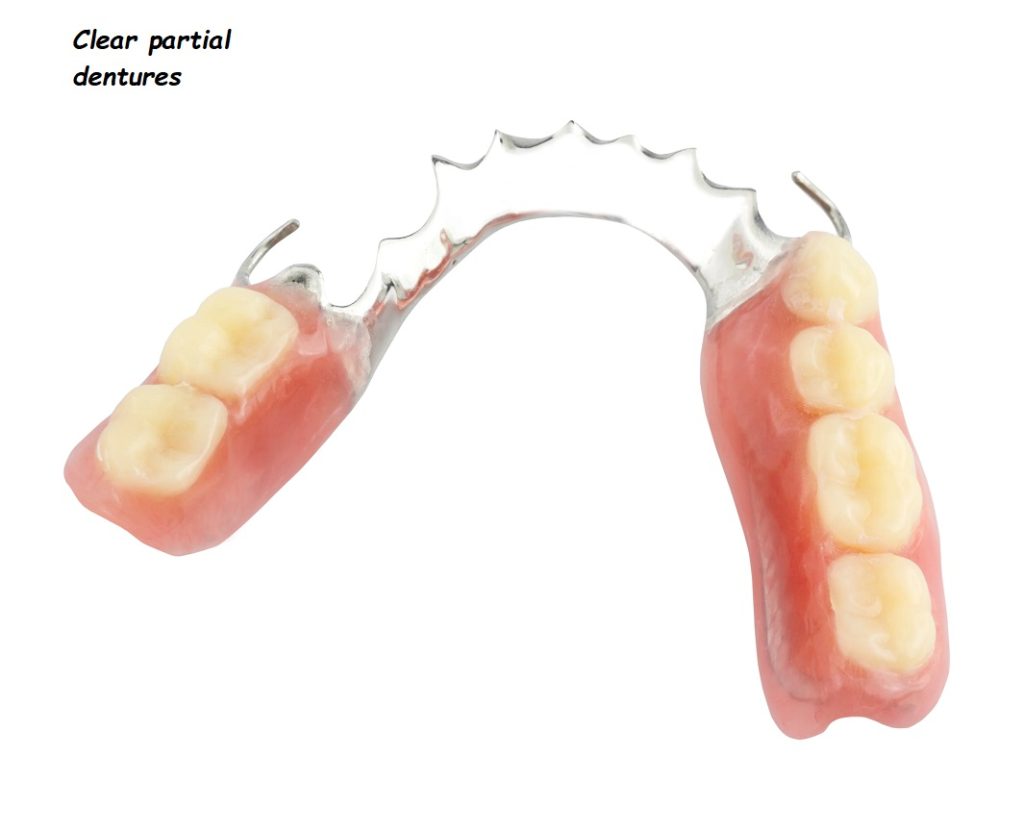Can a bridge be attached to an existing crown

Dental bridges and crowns are essential components of restorative dentistry. They play a crucial role in enhancing dental function and aesthetics by addressing missing or damaged teeth. One common question that arises is, “Can a bridge be attached to an existing crown?” This comprehensive guide aims to provide an in-depth understanding of dental bridges, crowns, and the possibility of attaching a bridge to an existing crown. We will explore the different types of dental bridges, the role of crowns, and the procedure for combining these dental restorations.
Understanding Dental Bridges
A dental bridge is a fixed dental restoration used to replace one or more missing teeth by literally “bridging” the gap between two teeth. Bridges consist of two main components: the pontic (artificial tooth) and the abutment teeth (the supporting teeth). There are several types of dental bridges, each with its specific design and application.
Types of Dental Bridges
1. Traditional Dental Bridges
Traditional bridges are the most common type. They consist of one or more pontics held in place by dental crowns that are cemented onto the abutment teeth. This type of bridge is suitable when you have natural teeth on both sides of the gap created by the missing tooth.
2. Cantilever Bridges
Cantilever bridges are used when there is only one natural tooth next to the missing tooth. In this design, the pontic is anchored by a dental crown on just one abutment tooth. This type is less common and is typically used in areas of the mouth that experience less stress from chewing.
3. Maryland Bridges
Maryland bridges, also known as resin-bonded bridges, use a metal or porcelain framework bonded to the back of the adjacent teeth. This design minimizes the need for extensive tooth preparation, making it a more conservative option.
4. Implant-Supported Bridges
Implant-supported bridges are ideal for patients missing multiple teeth. Instead of being supported by crowns on natural teeth, these bridges are anchored by dental implants, providing a stable and long-lasting solution.
Understanding Dental Crowns
Dental crowns, also known as caps, are restorations that cover and protect a damaged or decayed tooth. They are used to restore the tooth’s shape, size, strength, and appearance. Crowns can be made from various materials, including porcelain, ceramic, metal, or a combination of these, offering durability and a natural look.
Reasons for Getting a Dental Crown
Crowns are used in various situations, such as:
- Protecting a Weak Tooth: Crowns can prevent a weak tooth from breaking.
- Restoring a Broken or Worn-Down Tooth: Crowns restore the functionality and appearance of damaged teeth.
- Covering and Supporting a Tooth with a Large Filling: When there isn’t enough natural tooth structure left, a crown provides support.
- Holding a Dental Bridge in Place: Crowns can anchor a dental bridge.
- Covering Misshapen or Discolored Teeth: Crowns improve the aesthetics of teeth.
- Covering a Dental Implant: Crowns are used to cover dental implants.
Can a Bridge Be Attached to an Existing Crown?
The short answer is yes, a bridge can be attached to an existing crown. However, there are specific considerations and steps involved in this process. The feasibility of attaching a bridge to an existing crown depends on several factors, including the condition of the existing crown, the health of the abutment teeth, and the type of bridge being considered.
Factors to Consider
1. Condition of the Existing Crown
The existing crown must be in good condition to support a dental bridge. If the crown is damaged, decayed, or loose, it may need to be replaced before attaching a bridge.
2. Health of the Abutment Teeth
The teeth adjacent to the gap (abutment teeth) must be healthy and strong enough to support the bridge. Any underlying dental issues, such as decay or gum disease, must be addressed before proceeding with the bridge.
3. Type of Bridge
The type of bridge being considered will also influence the process. Traditional bridges that use crowns on abutment teeth may be easier to attach to an existing crown compared to other types, such as Maryland bridges.
Procedure for Attaching a Bridge to an Existing Crown
If the dentist determines that it is feasible to attach a bridge to an existing crown, the following steps are typically involved:
Step 1: Evaluation and Planning
The dentist will conduct a thorough examination, including X-rays, to assess the condition of the existing crown and the abutment teeth. A treatment plan will be developed based on this evaluation.
Step 2: Preparing the Abutment Teeth
If the existing crown is in good condition, it can be used as one of the abutment teeth for the bridge. The adjacent tooth on the other side of the gap will be prepared to receive a crown, if necessary. This involves reshaping the tooth to make room for the crown.
Step 3: Taking Impressions
Once the abutment teeth are prepared, impressions of the teeth and the gap are taken. These impressions are used to create a custom bridge that fits perfectly in the patient’s mouth.
Step 4: Fabricating the Bridge
The impressions are sent to a dental lab where the bridge is fabricated. This process typically takes a few weeks. In the meantime, a temporary bridge may be placed to protect the prepared teeth and maintain the aesthetics of the patient’s smile.
Step 5: Fitting and Cementing the Bridge
Once the permanent bridge is ready, the patient returns to the dentist’s office for fitting and cementing. The dentist will check the fit and appearance of the bridge, making any necessary adjustments. The bridge is then permanently cemented in place, attaching it to the existing crown and the newly prepared abutment tooth.
Benefits of Attaching a Bridge to an Existing Crown
There are several benefits to attaching a bridge to an existing crown, including:
1. Preservation of Dental Work
Using an existing crown can preserve previous dental work, reducing the need for additional procedures and minimizing costs.
2. Improved Aesthetics
A dental bridge can restore the appearance of the patient’s smile, filling in gaps and providing a natural look.
3. Enhanced Functionality
Bridges restore the functionality of the patient’s teeth, allowing them to chew and speak more effectively.
4. Prevention of Dental Issues
A bridge can prevent the remaining teeth from shifting out of position, reducing the risk of bite problems and further dental issues.
Potential Challenges and Solutions
While attaching a bridge to an existing crown offers several benefits, there are potential challenges to consider. Understanding these challenges and their solutions can help ensure a successful outcome.
Challenge 1: Compatibility of Materials
The existing crown and the new bridge must be compatible in terms of materials and aesthetics. If the existing crown is made of metal and the new bridge is porcelain, there may be a noticeable difference in appearance.
Solution:
The dentist can recommend matching materials for the new bridge to ensure a seamless blend. In some cases, replacing the existing crown with one that matches the new bridge may be necessary.
Challenge 2: Stability and Support
The stability and support of the bridge depend on the condition of the existing crown and the abutment teeth. If the existing crown is not secure, it may compromise the stability of the bridge.
Solution:
A thorough evaluation and necessary repairs or replacements of the existing crown can ensure a stable foundation for the bridge. Addressing any underlying dental issues before proceeding with the bridge is crucial.
Challenge 3: Longevity of the Restoration
The longevity of the bridge may be affected by the condition of the existing crown. If the crown has a shorter lifespan than the bridge, it may require replacement sooner, impacting the overall durability of the restoration.
Solution:
Regular dental check-ups and proper oral hygiene can extend the lifespan of both the crown and the bridge. The dentist can monitor the condition of the restoration and address any issues promptly.
Caring for Your Dental Bridge and Crown
Proper care and maintenance are essential to ensure the longevity of your dental bridge and crown. Here are some tips for maintaining your dental restorations:
1. Maintain Good Oral Hygiene
Brush your teeth at least twice a day and floss daily to prevent plaque buildup and gum disease. Pay special attention to the area around the bridge and crown to keep it clean.
2. Use an Antibacterial Mouthwash
Rinse your mouth with an antibacterial mouthwash to reduce the risk of infection and maintain overall oral health.
3. Avoid Hard and Sticky Foods
Avoid chewing on hard foods, such as ice or hard candies, and sticky foods, such as caramel or chewing gum, which can damage your bridge and crown.
4. Regular Dental Check-Ups
Schedule regular dental check-ups and cleanings to monitor the condition of your bridge and crown. Your dentist can identify potential issues early and provide appropriate treatment.
5. Wear a Mouthguard
If you grind or clench your teeth, consider wearing a mouthguard at night to protect your dental restorations from excessive wear and damage.
FAQs About Dental Bridges and Crowns
Q1: Can a bridge be attached to two existing crowns?
A: Yes, a bridge can be attached to two existing crowns if they are in good condition and provide adequate support. The dentist will evaluate the crowns and the abutment teeth to ensure they can sustain the bridge.
Q2: How long does a dental bridge last?
A: With proper care and maintenance, a dental bridge can last between 10 to 15 years, and sometimes even longer. Regular dental check-ups and good oral hygiene are essential to extend the lifespan of your bridge.
Q3: Can I get a bridge if I have gum disease?
A: Gum disease must be treated and managed before getting a dental bridge. Healthy gums and supportive bone structure are crucial for the success of a dental bridge.
Q4: Is it painful to get a dental bridge?
A: The process of getting a dental bridge is generally not painful, as local anesthesia is used to numb the area during tooth preparation. Some discomfort may be experienced after the procedure, but it is usually mild and temporary.
Q5: Can I replace an old bridge with a new one?
A: Yes, an old bridge can be replaced with a new one. The dentist will evaluate the condition of the abutment teeth and any changes in your dental health to ensure the new bridge fits properly and provides adequate support.
Conclusion
Attaching a bridge to an existing crown is a viable option for restoring missing teeth and improving dental function and aesthetics. The success of this procedure depends on the condition of the existing crown, the health of the abutment teeth, and the type of bridge being used. By understanding the factors involved and following proper care and maintenance practices, you can ensure the longevity and effectiveness of your dental restorations. If you have any questions or concerns about attaching a bridge to an existing crown, consult your dentist for expert advice and personalized care.









